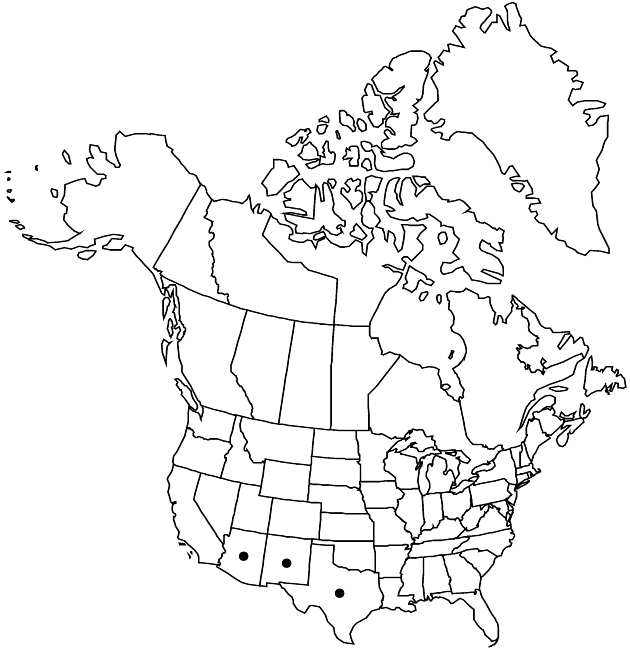Difference between revisions of "Brickellia baccharidea"
Smithsonian Contr. Knowl. 3(5): 87. 1852.
FNA>Volume Importer |
FNA>Volume Importer |
||
| Line 47: | Line 47: | ||
|publication year=1852 | |publication year=1852 | ||
|special status= | |special status= | ||
| − | |source xml=https://jpend@bitbucket.org/aafc-mbb/fna-data-curation.git/src/ | + | |source xml=https://jpend@bitbucket.org/aafc-mbb/fna-data-curation.git/src/8f726806613d60c220dc4493de13607dd3150896/coarse_grained_fna_xml/V19-20-21/V21_1243.xml |
|tribe=Asteraceae tribe Eupatorieae | |tribe=Asteraceae tribe Eupatorieae | ||
|genus=Brickellia | |genus=Brickellia | ||
Revision as of 15:31, 18 September 2019
Shrubs, 100–150 cm. Stems (ascending) branched, pubescent, sometimes glandular-pubescent. Leaves alternate; petioles 4–10 mm; blades 3-nerved from bases, rhombic-ovate, 10–40 × 10–20 mm, bases cuneate, margins laciniate-dentate, apices acute to obtuse, faces glabrate or gland-dotted. Heads in dense, paniculiform arrays. Peduncles 5–40 mm, pubescent. Involucres narrowly campanulate, 7–11 mm. Phyllaries 35–40 in 5–7 series, 3–5-striate, unequal, (glabrous, ± chartaceous) margins narrowly scarious (apices acute to acuminate); outer ovate, inner lanceolate. Florets 16–17; corollas cream, 6–7 mm. Cypselae 2–3 mm, pubescent; pappi of 18–24 white, barbellate bristles. 2n = 18.
Phenology: Flowering Oct–Apr.
Habitat: Sandy to granitic soils, limestone slopes, granitic cliffs
Elevation: 500–1600 m
Distribution

Ariz., N.Mex., Tex.
Discussion
Of conservation concern.
Selected References
None.